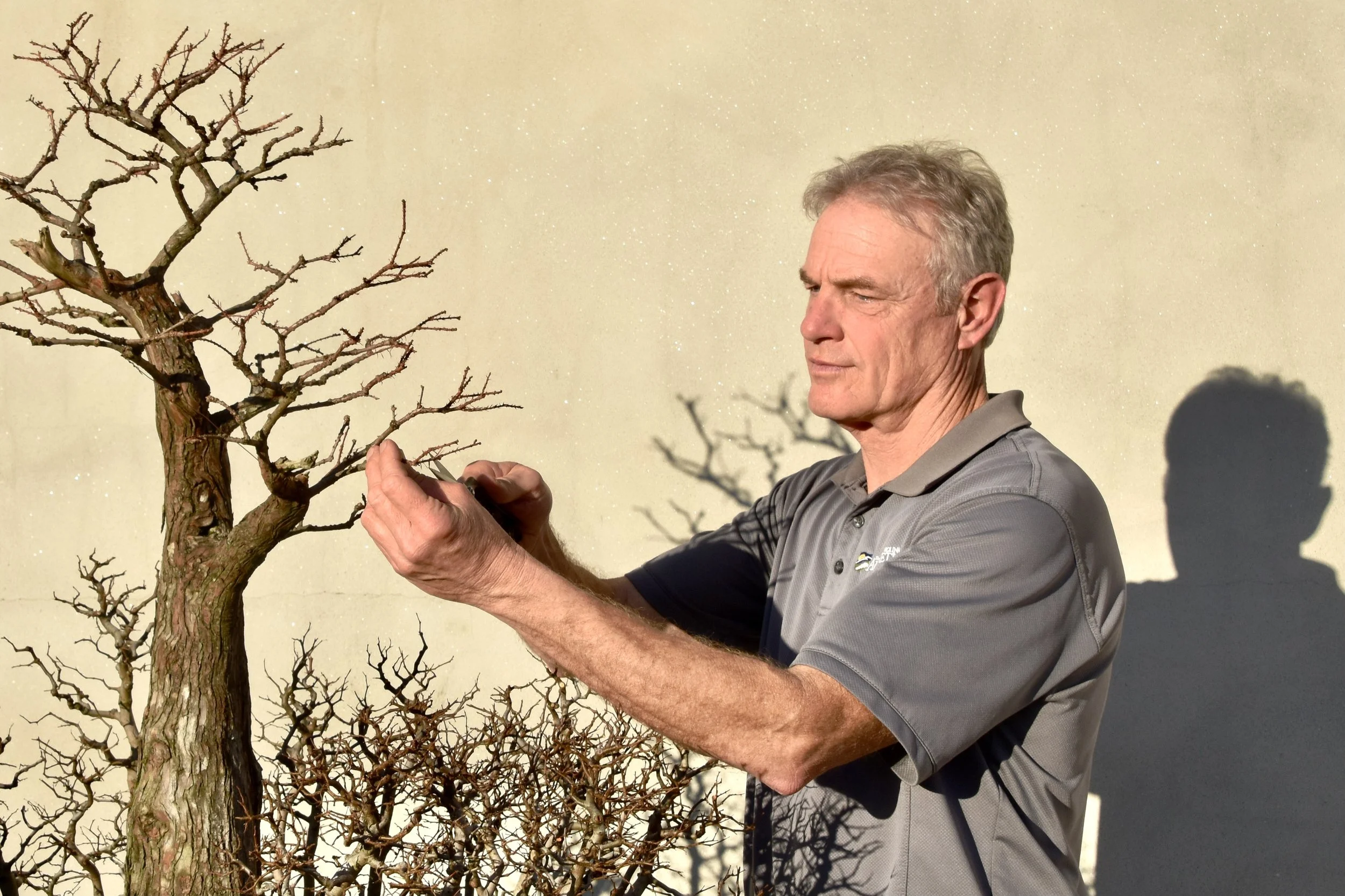Supporting the Curator’s Journal
How did the art of bonsai come to be so central to the identity of an arboretum in Southern Appalachia? At The North Carolina Arboretum, we do it by consciously rooting a foreign art in our own place, updating its ancient image to the present day. Through a regionally focused perspective, the Arboretum offers visitors the opportunity to take away a much larger lesson about the biological diversity and complex beauty of Southern Appalachia.
Our curator, Arthur Joura, has spent the whole of his long career shaping a highly original collection for the Arboretum, one that is devoted to sharing “the simple truth about bonsai,” a perfect melding of art and horticulture in miniature.
Thousands of visitors come through the garden each year to view the tiny trees and tray landscapes in a garden specifically designed for their display. Some visitors may not recognize that they’re experiencing an approach to bonsai distinctly different from anywhere else in the world, but they are.
There are life lessons contained within the little trees, too, though they tell their stories without words. A knowledgeable interpreter can help in discerning the difference between merely looking at something and seeing it more deeply. The best possible guide for exploring bonsai at The North Carolina Arboretum is the curator who has nurtured both the trees and the program for more than three decades. The Curator’s Journal strives to give readers the most engagingly presented and best possible understanding of how bonsai at the Arboretum came to be the way it is.
For more information about donor support, please contact Jodi John Pippin, Director of Development, at development@ncarboretum.org or 828-665-2492 x221.
A gold mine of ideas for bonsai enthusiasts at all levels
“Arthur Joura’s Journal is astonishing in so many ways. Every entry answers a question about bonsai that might have long lurked in the reader’s mind. For those bonsai donated to the Arboretum’s Bonsai Collection by other artists over the past three decades, Arthur preserves their legacy in heartwarming acknowledgments. For the many bonsai that Arthur has created himself during his tenure, he takes us back to the beginning, describing each species and other elements of the composition, and how he assembled and developed it over the years. This is a gold mine of ideas for bonsai enthusiasts at all levels.
Internationally appreciated for his naturalistic approach to styling bonsai, Arthur spends many of his weekends as a keen observer and collector of mental and photographic images of the ancient trees growing in the Blue Ridge Mountains around Asheville. His journal illuminates for the reader, in the finest writing you will ever find about the art of bonsai, how he has imbued the Bonsai Collection with the freshness of those idyllic mountain scenes. In the process, he expanded the typical list of species suitable for bonsai to include many native trees like red maples (Acer rubrum), American hornbeam (Carpinus caroliniana) and eastern white pine (Pinus strobus).
Complemented with Arthur’s prodigious notes and photographs taken over the last 30 years, the Curator’s Journal provides readers with a fascinating and never-before revealed montage of insights about the art of bonsai and about a legendary collection of bonsai art.”
